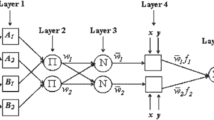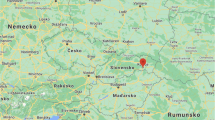Abstract
Evapotranspiration (ET) is a fundamental element in the hydrological cycle and plays a vital role in simulating hydrological effects of climate change. Accurate estimation of reference evapotranspiration (ETo) plays a significant role in the field of hydrometeorology and agrometeorology. There are many direct or indirect methods that are employed for estimation of ETo. Furthermore, soft computing approaches are also used to solve complex problems of estimation in various disciplines. The application of the soft computing techniques for estimating evapotranspiration has only been limited to few approaches including artificial neural network, fuzzy logic, and genetic algorithm. This study is conducted to apply non-conventional soft computing approaches for estimating ETo which include single decision tree (SDT), tree boost (TB), and decision tree forest (DTF). Monthly meteorological data spanning over 30 years (1987 to 2016) for six different cities located in arid, semi-arid, and humid regions of Pakistan is used for the estimation of ETo in this study. Seventeen input combinations comprising of various climatic parameters were developed to evaluate the impact of different parameters. A total of 306 models were developed using the SDT, TB, and DTF approaches for all six selected cities of Pakistan. The results of the developed models are then compared with ETo calculated by the standard method of modified Penmen equation. The TB modeling technique is found to perform best for various cities located in different climatic zones of Pakistan. Only two climatic parameters, the mean temperature and wind velocity, are found to be sufficient for efficient ETo prediction. To further validate the results, the outcome of the study was applied on some other climatic regions located in the USA, New Zealand, and China. Finally, it is concluded that these non-conventional approaches can also be considered superior alternatives to the available methods of estimating ETo.











Similar content being viewed by others
References
Arca B, Benincasa F, Bianchini M, De Vincenzi M, Gori M (1998) Le reti neurali nel calcolo dei flussi radiativi. Rivista di Ingegneria Agraria 1:26–31
Baker C, Lawrence R, Montagne C, Patten D (2006) Mapping wetlands and riparian areas using Landsat ETM+ imagery and decision-tree-based models. Wetlands 26(2):465–474
Basheer I, Hajmeer M (2000) Artificial neural networks: fundamentals, computing, design, and application. J Microbiol Methods 43(1):3–31
Breiman L (2001) “Random forests.” Machine learning 45(1):5–32
Cobaner M (2011) Evapotranspiration estimation by two different neuro-fuzzy inference systems. J Hydrol 398(3-4):292–302
Doğan E (2009) Reference evapotranspiration estimation using adaptive neuro-fuzzy inference systems. Irrig Drain 58(5):617–628
Dowla FU, Rogers LL (1995) Solving problems in environmental engineering and geosciences with artificial neural networks. Mit Press, Cambridge
Federer C, Vörösmarty C, Fekete B (1996) Intercomparison of methods for calculating potential evaporation in regional and global water balance models. Water Resour Res 32(7):2315–2321
Guven A, Aytek A, Yuce MI, Aksoy H (2008) Genetic programming-based empirical model for daily reference evapotranspiration estimation. Clean Soil Air, Water 36(10-11):905–912. https://doi.org/10.1002/clen.200800009
Ibrahim D (2016) An overview of soft computing. Procedia Computer Science 102:34–38. https://doi.org/10.1016/j.procs.2016.09.366
Kale M, Nagdeve M, Bagade S (2013) Estimation of evapotranspiration with ANN technique. Journal of Indian Water Resources Society 33(1):23–29
Keskin ME, Terzi Ö (2006) Artificial neural network models of daily pan evaporation. J Hydrol Eng 11(1):65–70
Kim S, Kim HS (2008) Neural networks and genetic algorithm approach for nonlinear evaporation and evapotranspiration modeling. J Hydrol 351(3):299–317
Kotsiantis SB, Zaharakis I, Pintelas P (2007) Supervised machine learning: a review of classification techniques. Emerging artificial intelligence applications in computer engineering 160:3–24
Kumar M, Raghuwanshi N, Singh R, Wallender W, Pruitt W (2002) Estimating evapotranspiration using artificial neural network. J Irrig Drain Eng 128(4):224–233
Łabędzki L, Kanecka-Geszke E, Bak B, Slowinska S (2011) Estimation of reference evapotranspiration using the FAO Penman-Monteith method for climatic conditions of Poland Evapotranspiration: InTech. https://doi.org/10.5772/14081
Landeras G, Ortiz-Barredo A, López JJ (2008) Comparison of artificial neural network models and empirical and semi-empirical equations for daily reference evapotranspiration estimation in the Basque Country (Northern Spain). Agric Water Manag 95(5):553–565
Lee S, Kim J-C, Jung H-S, Lee MJ, Lee S (2017) Spatial prediction of flood susceptibility using random-forest and boosted-tree models in Seoul metropolitan city, Korea. Geomatics, Natural Hazards and Risk 8(2):1185–1203
Legates DR, McCabe GJ (1999) Evaluating the use of “goodness-of-fit” measures in hydrologic and hydroclimatic model validation. Water Resour Res 35(1):233–241
Leong LK (2014) Analyzing big data with decision trees. Master’s thesis, San Jose State University, USA
Liaw A, Wiener M (2002) Classification and regression by randomForest. R News 2(3):18–22
Mantas CJ, Abellán J (2014) Credal-C4. 5: Decision tree based on imprecise probabilities to classify noisy data. Expert Syst Appl 41(10):4625–4637
McMahon T, Peel M, Lowe L, Srikanthan R, McVicar T (2013) Estimating actual, potential, reference crop and pan evaporation using standard meteorological data: a pragmatic synthesis. Hydrol Earth Syst Sci 17(4):1331
Nourani V, Molajou A (2017) Application of a hybrid association rules/decision tree model for drought monitoring. Glob Planet Chang 159:37–45
Nouri H, Beecham S, Kazemi F, Hassanli A, Anderson S (2013) Remote sensing techniques for predicting evapotranspiration from mixed vegetated surfaces. Hydrol Earth Syst Sci Discuss 10(3):3897–3925
Odhiambo LO, Yoder R, Yoder D, Hines J (2001) Optimization of fuzzy evapotranspiration model through neural training with input–output examples. Transactions of the ASAE 44(6):1625
Parasuraman K, Elshorbagy A, Carey SK (2007) Modelling the dynamics of the evapotranspiration process using genetic programming. Hydrol Sci J 52(3):563–578
Qasim M, Khlaid S, Shams DF (2014) Spatiotemporal variations and trends in minimum and maximum temperatures of Pakistan. J Appl Environ Biol Sci 4(8S):85–93
Rácz C, Nagy J, Dobos AC (2013) Comparison of several methods for calculation of reference evapotranspiration. Acta Silv Lign Hung 9(1):9–24
Ridgeway G (2007) Generalized boosted models: a guide to the gbm package. Update 1(1):2007
Schultz A, Wieland R, Lutze G (2000) Neural networks in agroecological modelling—stylish application or helpful tool? Comput Electron Agric 29(1):73–97
Sherrod PH (2003) DTREG predictive modeling software. Software available at http://www.dtreg.com
Sherrod PH (2008) DTREG predictive modeling software. Users Manual. Disponível online no url: (http://www.dtreg.com/DTREG.pdf) (Acedido 28 Março 2014)
Shiri J, Kişi Ö, Landeras G, López JJ, Nazemi AH, Stuyt LC (2012) Daily reference evapotranspiration modeling by using genetic programming approach in the Basque Country (Northern Spain). J Hydrol 414:302–316
Sudheer K, Gosain A, Ramasastri K (2005) Closure to “estimating actual evapotranspiration from limited climatic data using neural computing technique” by KP Sudheer, AK Gosain, and KS Ramasastri. J Irrig Drain Eng 131(2):220–220
Summit Sherma RDG (2016) Prediction of evapotranspiration by artificial neural network and conventional methods. International Journal of Engineering Research 5(Special 1):184–187
Valiantzas JD (2013) Simplified forms for the standardized FAO-56 Penman–Monteith reference evapotranspiration using limited weather data. J Hydrol 505:13–23
Vinukollu RK, Wood EF, Ferguson CR, Fisher JB (2011) Global estimates of evapotranspiration for climate studies using multi-sensor remote sensing data: Evaluation of three process-based approaches. Remote Sens Environ 115(3):801–823
Zanetti S, Sousa E, Oliveira V, Almeida F, Bernardo S (2007) Estimating evapotranspiration using artificial neural network and minimum climatological data. J Irrig Drain Eng 133(2):83–89
Zhao L, Xia J, Xu C-y, Wang Z, Sobkowiak L, Long C (2013) Evapotranspiration estimation methods in hydrological models. J Geogr Sci 23(2):359–369
Acknowledgments
Authors pay gratitude to the Pakistan Meteorological Department (PMD) for the provision of recorded data. We also acknowledge the anonymous reviewers whose constructive suggestions help us to improve this manuscript.
Author information
Authors and Affiliations
Corresponding author
Additional information
Publisher’s note
Springer Nature remains neutral with regard to jurisdictional claims in published maps and institutional affiliations.
Highlights
• Reference evapotranspiration is estimated using climatic data in various climatic regions.
• Soft computing approaches including decision tree, tree boost, and decision tree forest are used for estimating ETo.
• Tree boost is found to produce accurate results for all the climatic regions.
• Mean temperature and wind speed are found to be more significant parameters.
Rights and permissions
About this article
Cite this article
Raza, A., Shoaib, M., Khan, A. et al. Application of non-conventional soft computing approaches for estimation of reference evapotranspiration in various climatic regions. Theor Appl Climatol 139, 1459–1477 (2020). https://doi.org/10.1007/s00704-019-03007-3
Received:
Accepted:
Published:
Issue Date:
DOI: https://doi.org/10.1007/s00704-019-03007-3




